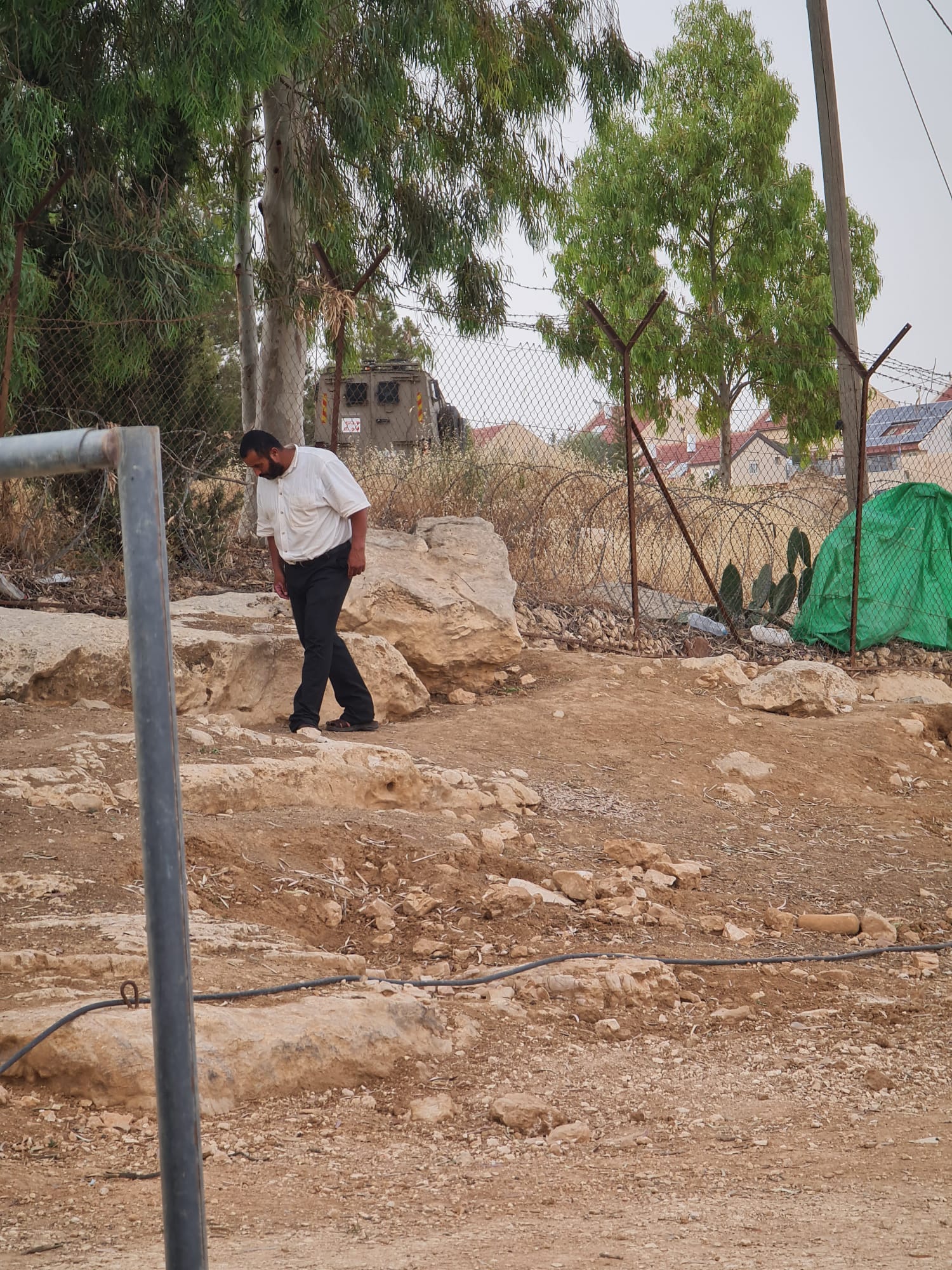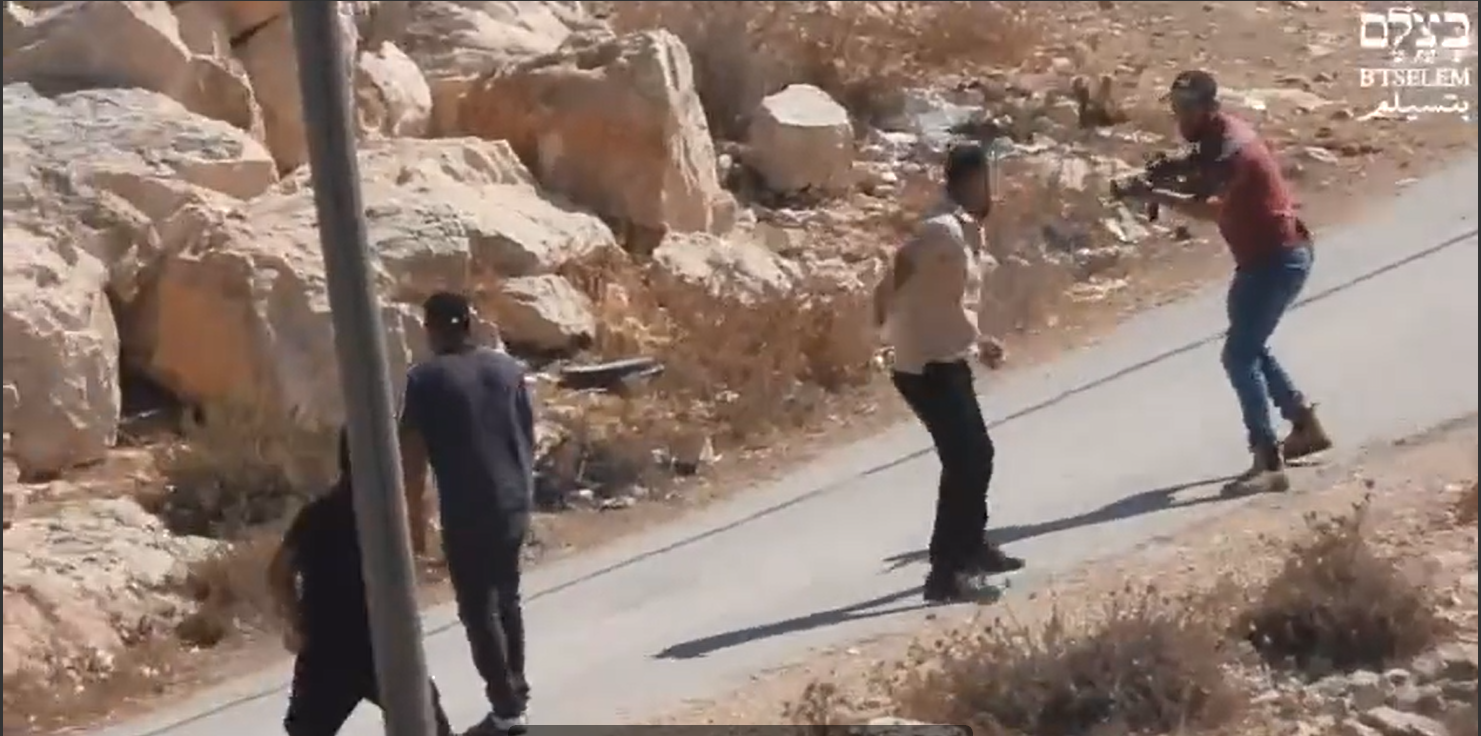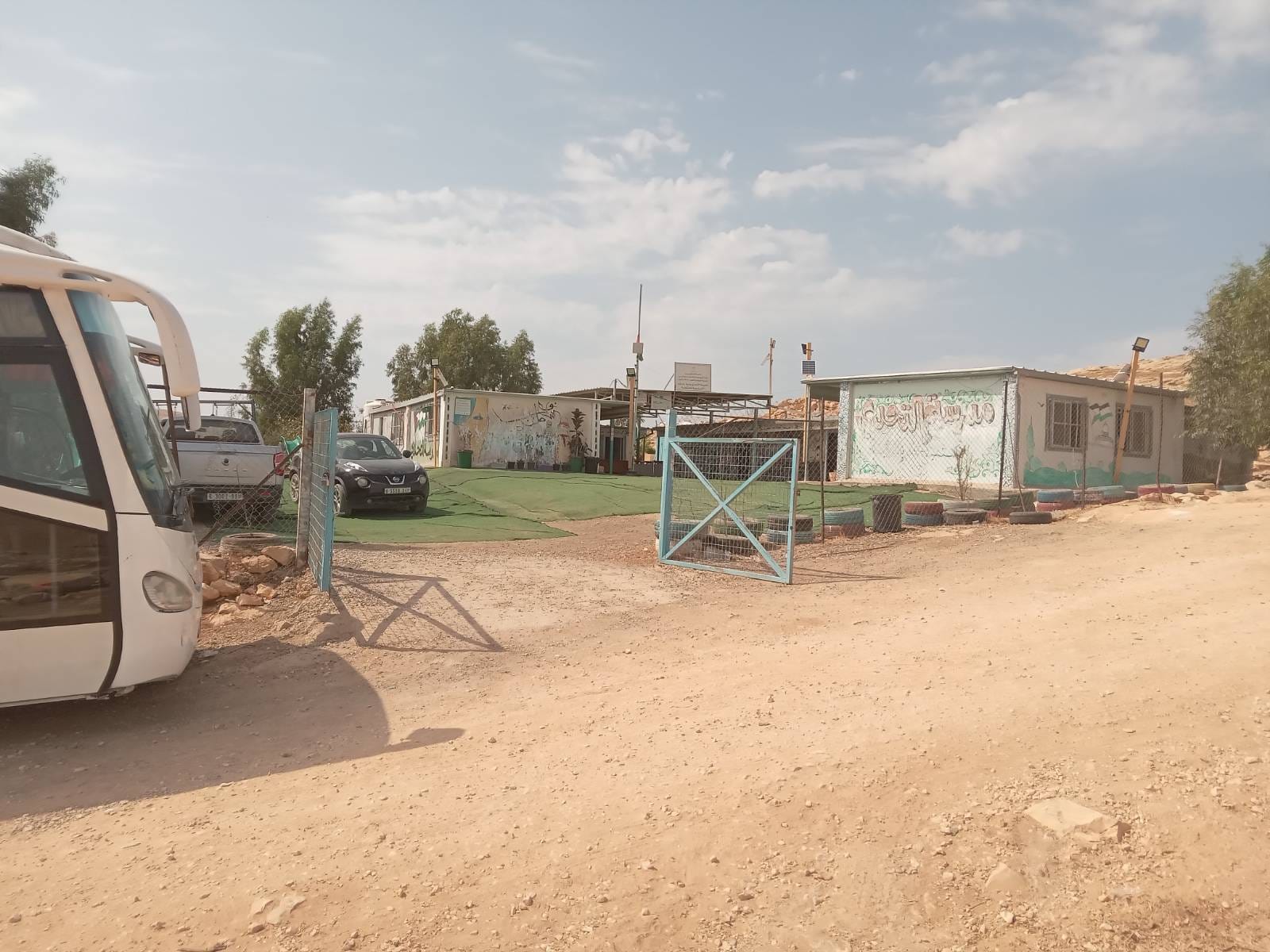Category: Journals
-
Revenge attacks in Masafer Yatta
16 October, 2023 | International Solidarity Movement | Masafer Yatta In the week since Israel began its onslaught on Gaza, soldiers and settlers have bulldozed homes, carried out night raids and attacked Palestinians across the Masafer Yatta region. Occupation forces have taken advantage of the state of emergency to escalate their violence and displacement…
-
Watch: Israeli settler shoots Palestinian at point blank range in village of At-Tuwani
TRIGGER WARNING: Blood On Friday, October 13th 2023, a settler from the illegal Israeli outpost of Havat Ma’on entered the Palestinian village of At-Tuwani, in the region of Masafer Yatta, armed with an assault rifle and shot a Palestinian man in the stomach at point blank range. The video, which was made public by…
-
Palestinians hospitalised in settler attack near Ramallah
15 October, 2023 | International Solidarity Movement | Wadi Siq Armed settlers attacked Palestinians and international volunteers in the Bedouin village of Wadi Siq, east of Ramallah, on Thursday (October 12) hospitalising two people. Villagers were also beaten after the illegal settlers returned for a second attack later that day, ISMers were told. …



